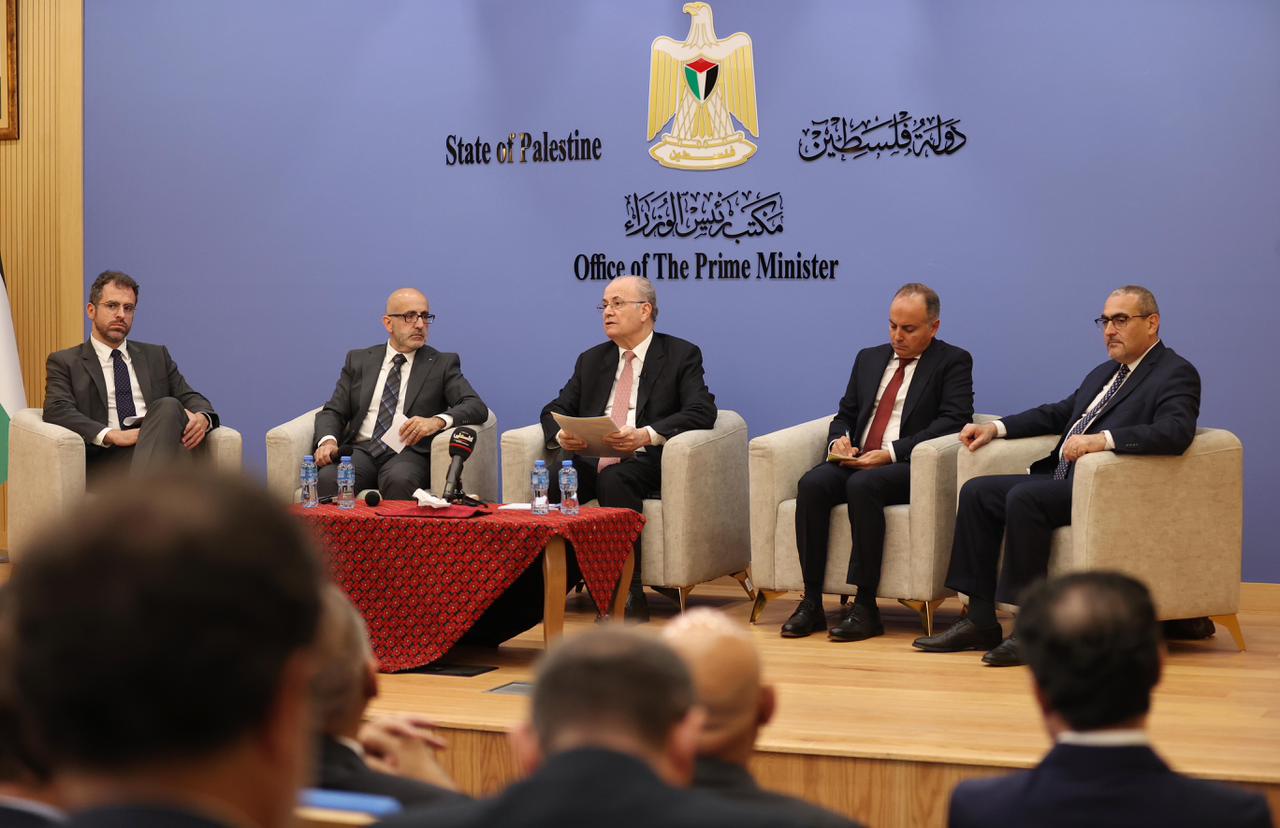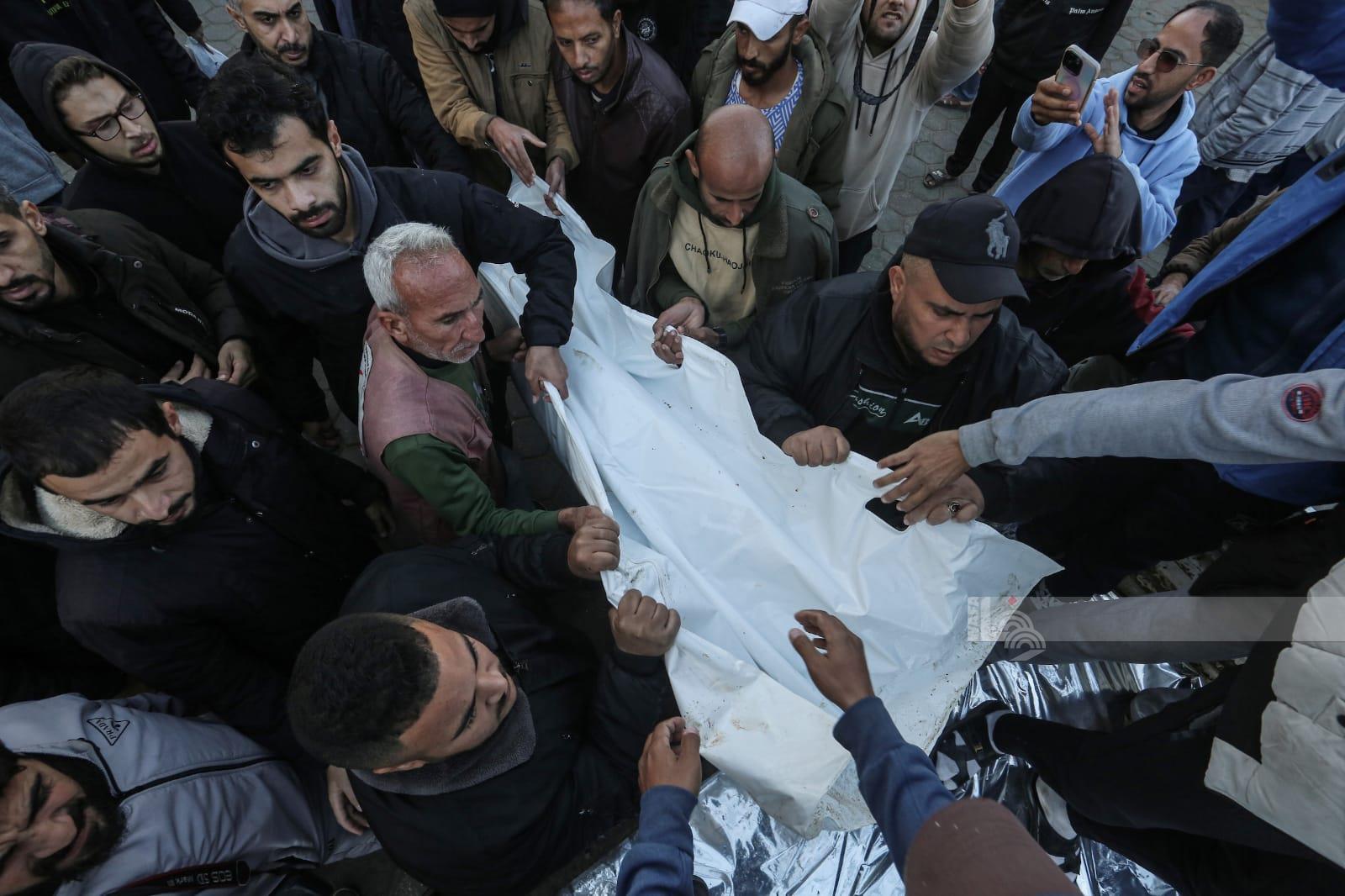Keynote address by Prime Minister Mohammad Mustafa at the High-Level meeting on the situation in Gaza:
RAMALLAH, October 16, 2025 (WAFA) – After more than two years of devastating war, Gaza has suffered widespread destruction, mass displacement, and deep humanitarian suffering.
Yet, the Government of Palestine stands firm in its resolve to lead a nationally owned process of recovery and reconstruction that restores dignity and hope to our people.
In partnership with Arab states and international partners, we have prepared a comprehensive plan (with implementation programs and detailed projects) for Gaza’s early recovery and long-term reconstruction.
Our vision is clear: Gaza shall be rebuilt as an open, connected, and thriving part of the State of Palestine, in line with UN relevant resolutions and the New York Declaration.
Recovery will not only restore homes, schools, hospitals, and infrastructure but above all it will restore hope for our people and will strengthen governance, empower communities, and build resilience against future shocks.
The Government has put in place a unified framework for recovery through the Gaza Recovery and Reconstruction Implementation Program (GRRIP). This program builds directly on the Arab Plan for Recovery, Reconstruction, and Development of Gaza, adopted by the Extraordinary Arab Summit in Cairo in March 2025. The Arab Plan confirmed Arab commitment to Palestinian leadership and mobilization of coordinated resources for recovery.
Updated International estimates put damages, losses, and needs to over US$ 67 billion. The Program defines therefore a five-year framework valued at US$ 67 billion, covering 56 sub-programs across 18 sectors, including housing, social services, infrastructure, economy, and governance. This program will be implemented in close coordination with line ministries, national institutions, and international partners.
The five-year program is structured in three sequential phases: the first phase: a six-month emergency phase focused on early recovery valued at $ 3.5 B; the second phase: a three-year reconstruction and recovery phase valued at around US$ 30 billion; and the third phase will be the reconstruction phase.
Together, these phases provide a coherent pathway from relief to sustainable development, ensuring that immediate interventions are linked to institutional recovery, economic revival, and durable reconstruction.
The first phase will begin immediately following a ceasefire, with the Government launching a six-month Early Recovery Plan with an estimated investment of US$ 3.5 billion. This plan focuses on:
▪︎ Debris removal and restoration of basic infrastructure and services.
Transitional housing;
▪︎ Cash assistance and cash-for-work programs to provide income and create jobs.
Support for small enterprises and agriculture to revive livelihoods;
▪︎ Reactivating the Banking System.
Provision of psychosocial support, education, and health services;
▪︎ Assistance for persons with disabilities, including rehabilitation and assistive devices.
One month after the ceasefire, Egypt will convene the Gaza Reconstruction Conference in Cairo. This conference will serve as the central platform for mobilizing international resources and partnerships, while reaffirming that all efforts are anchored in Palestinian national ownership and leadership.
The Government of Palestine reaffirms that effective governance in Gaza is an essential pillar of recovery and stability. Without strong and unified national institutions, the risks of inefficiency, duplication, and eventual collapse of basic services would be dangerously high.
The re-activation of legitimate Palestinian institutions in Gaza will therefore proceed in full alignment with national laws and the Palestinian Authority’s public administration institutions.
Palestine already possesses unified systems in key sectors such as health, education, water and sanitation, land and civil registry, public finance, and taxation.
These systems, recognized by international partners, must be empowered and strengthened, not replaced by parallel or temporary structures that would be incapable of sustaining effective service delivery on the ground.
This process will be implemented as part of the ongoing national reform program focused on transparency, accountability, and institutional performance, with the active support and audit of international partners. It will also reinforce the political and territorial unity between Gaza and the West Bank and contribute to restoring a credible governance framework for the State of Palestine.
The Palestinian National Authority approaches the issue of security in Gaza as a central pillar of its broader national vision for unity, sovereignty, and the realization of the independent State of Palestine on the 1967 borders, with East Jerusalem as its capital.
The Government therefore reaffirms that effective security and governance in Gaza must be nationally owned and led, rooted in national institutions and consistent with international law.
The PNA remains open to coordination with, and support from Arab and international partners in support of stabilization and civilian protection, including, where necessary, a temporary and clearly defined international or regional presence mandated by the United Nations Security Council and implemented in coordination with the State of Palestine.
Such arrangements must be time-bound, and fully subject to Palestinian sovereignty and legal authority.
Police Training programs, initiated with Egypt and Jordan, are already underway. Recruitment and training can be scaled up according to operational needs. The Palestinian police and security forces will gradually operate in Gaza after the war, but always in accordance with Palestinian laws and under the full command and coordination of the Palestinian Authority’s leadership.
The Government is ready for the phased reactivation of Gaza’s borders with Egypt in close coordination with Egypt and the EU. Technical discussions are advancing with the EU on secure crossing operations, customs systems, and integrated policing units.
In conclusion, The Government of Palestine has built a coherent, technically grounded, and institutionally led framework for Gaza’s recovery and reconstruction. The Gaza Recovery and Reconstruction Implementation Program (GRRIP), the Arab Plan, and the established operational structures, and financing mechanisms, we are ready to move from planning to implementation the moment post ceasefire arrangements are finalized.
Our message to the international community is clear: Gaza’s reconstruction must be Palestinian-led, Arab-backed, and internationally supported, ensuring not only the rebuilding of Gaza but also the restoration of hope, dignity, and stability for its people.
Y.S











